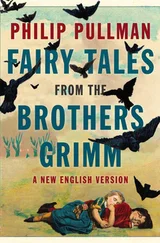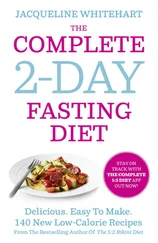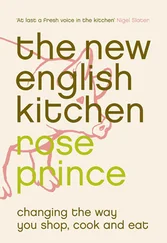ASPARAGUS
Asparagus with Pea Shoots and Mint
Boiled or Steamed Asparagus
Being one of those slow-growing vegetables with a short (eight-week) glut, British asparagus comes at a price too high for it to be anything but a treat. Having said that, I would be happy to live off bread and lentils at that time if I could eat asparagus by the kilo. Its arrival in the shops is a happy moment, an affirmation of spring. When the supply begins to dwindle and the spears begin to look a little hairy and overblown, it’s like the end of a birthday.
British asparagus should be all over the place in season, which, depending on the weather, runs from late April to the third week of June. Look for it in greengrocer’s shops and supermarkets; the boxes are usually heavily emblazoned with Union Jacks. Buying asparagus locally not only supports farmers in the region where you live, it also makes sense in terms of freshness. Competing with it will be the Spanish. I have to say I am not unhappy about using Spanish asparagus before the British season begins because it can be very good. Air-freighted baby Peruvian and Thai asparagus is tasteless and pointless.
Buying asparagus
To find your nearest asparagus grower, see www.british-asparagus.co.uk(tel: 01507 602427). To find a farmers’ market, check your local council website or www.lfm.ore.ukfor London markets.
For mail-order asparagus, contact Sandy Patullo, who grows exceptional asparagus and sea kale (another delicious edible stalk) in Scotland: Eassie Farm, By Glamis, Angus DD8 1SG; tel: 01307 840303.
All the major supermarkets sell British asparagus in season.
Asparagus with Pea Shoots and Mint
Pea shoots are an established vegetable now. They have been stocked by Sainsbury for the past three years and I often see them in markets. They are increasingly available in good food shops, too, and you can get them via mail order from Goodness Direct ( www.goodnessdirect.co.uk; tel: 0871 871 6611).
When they are cooked – lightly fried in a little oil or butter, or even steamed for a minute – they have all the taste of a good, sweet garden pea, or indeed a frozen pea, but with the added bonus of being lively plants. They appear around the same time as English asparagus and, while I am always happy to eat asparagus plain, the combination of the sweetness in the pea shoots and the unique grassy flavour of the asparagus is joyfully vernal.
Serves 4–6
1kg/2¼lb new-season asparagus
2 tablespoons extra virgin olive oil
4 punnets of pea shoots
a few small mint leaves
finely grated zest of ½ lemon
sea salt and freshly ground white pepper
For the sauce:
1 shallot, chopped
a grating or two of nutmeg
2 wineglasses of white wine
1 teaspoon white wine vinegar
225g/8oz unsalted butter, softened
Pare away the outer skin of each spear, taking off about 6cm/2½ inches from the base of the stem. Bring a large, shallow pan of water to the boil. Before cooking the asparagus, however, make the sauce. Put the shallot, nutmeg, white wine and white wine vinegar in a small saucepan and bring to the boil. Cook until the liquid has reduced to about 3 tablespoons, then strain it through a sieve and return it to the pan, discarding the shallot. Add the butter, about a teaspoon at a time, whisking it into the liquor over a low heat. When all the butter has been used, the sauce should be thick and creamy.
Add the asparagus to the pan of boiling water; it will need about 5 minutes’ simmering to become just tender. Meanwhile, put the oil in a small frying pan and fry the pea shoots in it until they collapse slightly.
Using tongs, lift the asparagus out of the water and drain on a cloth (I find asparagus breaks up if you tip it into a colander, and that it needs the cloth to get rid of excess water, which can make it soggy). Divide the asparagus between 4–6 warm serving plates and heap the pea shoots over the tips. Give the sauce one final whisk over the heat to amalgamate it (it will split a little if left, but it will ‘come back’), then pour it generously over the asparagus. Season with a little salt and pepper and scatter the mint leaves and lemon zest over the top. Eat immediately and, if you are in festive mode, serve as a starter before Fried Megrim Soleor the lamb with spring vegetables.
Boiled or Steamed Asparagus
I cook asparagus loose, either in boiling salted water in a shallow pan or in a steamer. Today’s varieties seem to take only about 5 minutes for a thick stem. If you have time, pare away the outer skin of the spears up to about 6cm/2½ inches from the base before cooking. This enables you to eat the whole spear, and allows the butter to sink in. Melt about 30g/1oz butter per person, pour it over the cooked asparagus and serve with loose sea salt.
BACON
Bacon and Shellfish
Bacon and Potatoes
Bacon Gravy for Sausages
Light Bacon Stew
Bacon and Apples
Bacon and Potato Salad with Green Celery Leaf and Cider Vinegar
Unhappiness reigns if there is no bacon in the house. It is my mainstay meat, the inexpensive strip of flesh that is the difference between having nothing to cook with and the ability to produce a meal quickly for everyone. It glamorises and adds body, not least its great and addictive flavour, to things such as lettuce and spring greens, and it keeps for weeks.
But be fussy about the bacon you buy. The food industry’s record in the cheap pig meat business is abysmal on both welfare and quality grounds. Pigs reared intensively in Holland and Denmark, major providers of budget pork products to the UK, suffer some unacceptable conditions. Two-thirds of sows (mothers) are tethered and confined in stalls with hard, slatted floors for all their lives. The idea is to make pig rearing super efficient and tidy, to the miserable detriment of the pigs themselves. They are no more than breeding machines, expected to shoot out three litters a year until their bodies pack up. Stalls and tethers are not permitted in indoor pig farms in the UK but sows are kept in farrowing crates during birth and for four weeks after, before being transferred back to a pen – a system that is not ideal but is less cruel. Feed for pigs in both systems is high protein, often heavy in soya (these omnivores consume little flesh), which grows the animal to its bacon weight in swift time so that it will become a highly profitable pig. Processing this meat into bacon, and maximising profit, means injections of brine and phosphates; liquid that you will see seeping from the rasher as it cooks. A big, heavy pack of Danish bacon, the supposed great budget buy, will become shrunken watery slivers in the pan. It is hard to see what is economical about that for the consumer but we assume the industry that produced it is laughing all the way to the till. There is better value in a pack of best smoked streaky from a pig that has been kindly and naturally reared; best of all, if the streaky is cured on the butcher’s premises. Ask for it to be sliced very thinly, so that all the rind is edible and the bacon cooks to a crisp stained-glass window in just a few minutes. Back rashers have their place, too, and it is good to have both cuts at the ready. Smoked bacon tends to be less salty, as it goes through two curing processes, and its flavour pervades other ingredients in recipes in a non-aggressive way. But these flavour comments are personal. Like tea, everyone likes bacon in a different way.
Buying bacon
Buy dry-cured bacon made as near as possible to your home. Ask butchers where they source either the bacon they sell or the pork they make their own from. If you cannot buy anything local, one of the best bacons via mail order is made by Peter Gott, at Sillfield Farm near Kendal in Cumbria ( www.sillfield.co.uk; tel: 015395 67609). The flavour of his dry-cured bacon and ‘pancetta’ is beautifully balanced, and is made with pork from free-range rare-breed pigs and wild boar. Furness Fish, Poultry and Game Supplies deal with the mail order: www.morecambebayshrimps.com; tel: 015395 59544.
Читать дальше












